Vietnam Travel Guide from Gomayu!
Imagine waking up to the symphony of motorbikes and street vendors in Hanoi’s ancient quarter. Picture yourself sailing through the emerald waters of Ha Long Bay, limestone giants towering above you like sleeping dragons. Feel the afternoon sun warming your face as you cycle through vibrant rice paddies outside Hoi An, where golden fields stretch to the horizon.
This is Vietnam, a land where every sense comes alive!
Table of Contents

Vietnam isn’t just a destination. It’s a full-sensory experience that stays with you long after you’ve returned home. Where else can you feast on a $1 bowl of steaming pho for breakfast, explore thousand-year-old temples by midday, haggle in colorful markets in the afternoon, and end your evening with rooftop drinks overlooking a skyline where colonial architecture meets futuristic design?
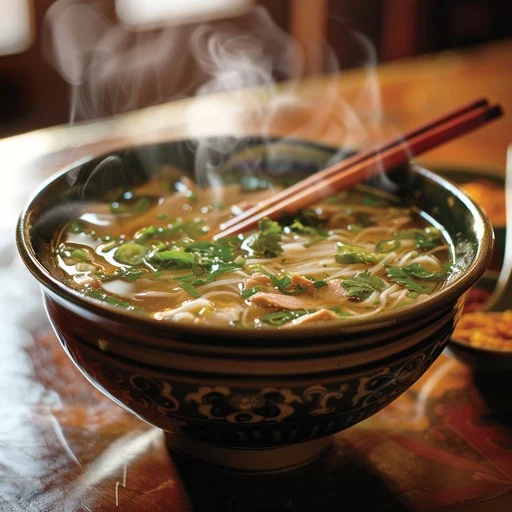
What makes Vietnam truly special is its remarkable resilience and warmth. This is a country that has transformed itself from a war-torn nation to one of Southeast Asia’s most dynamic destinations in just a generation. The Vietnamese people with their infectious optimism and entrepreneurial spirit welcome visitors not as tourists but as honored guests invited to share in their remarkable story.
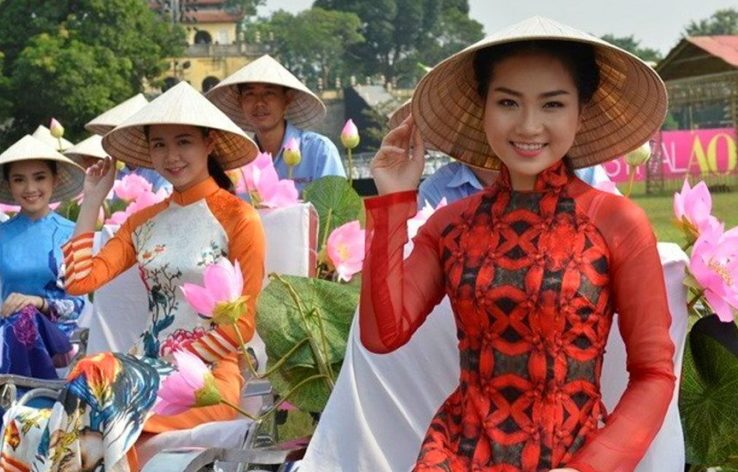
Our comprehensive Vietnam travel guide draws from countless footsteps across this diverse land from the misty mountains of the north to the lush Mekong Delta in the south. We’ve eaten, trekked, bargained, and motorbiked our way through this captivating country to bring you the insights that will transform your journey from ordinary tourism to extraordinary adventure.
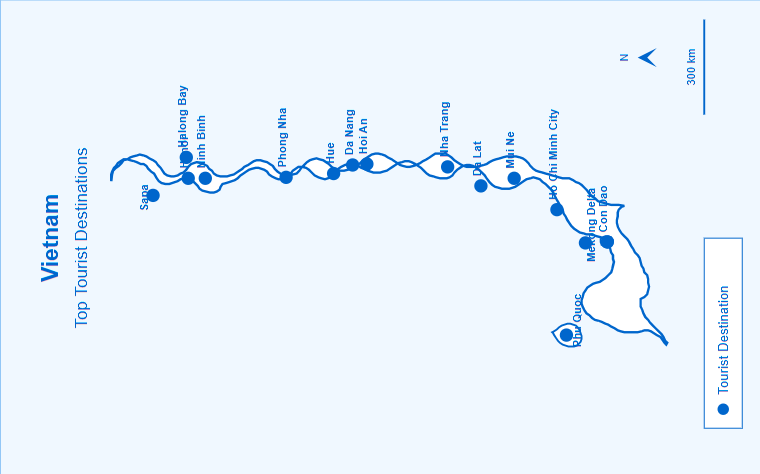
Whether you’re planning your first visit or returning to explore more deeply, let this Vietnam travel guide be your companion through a country where ancient traditions harmoniously blend with rapid modernization, and where your travel budget stretches further than you ever imagined possible.
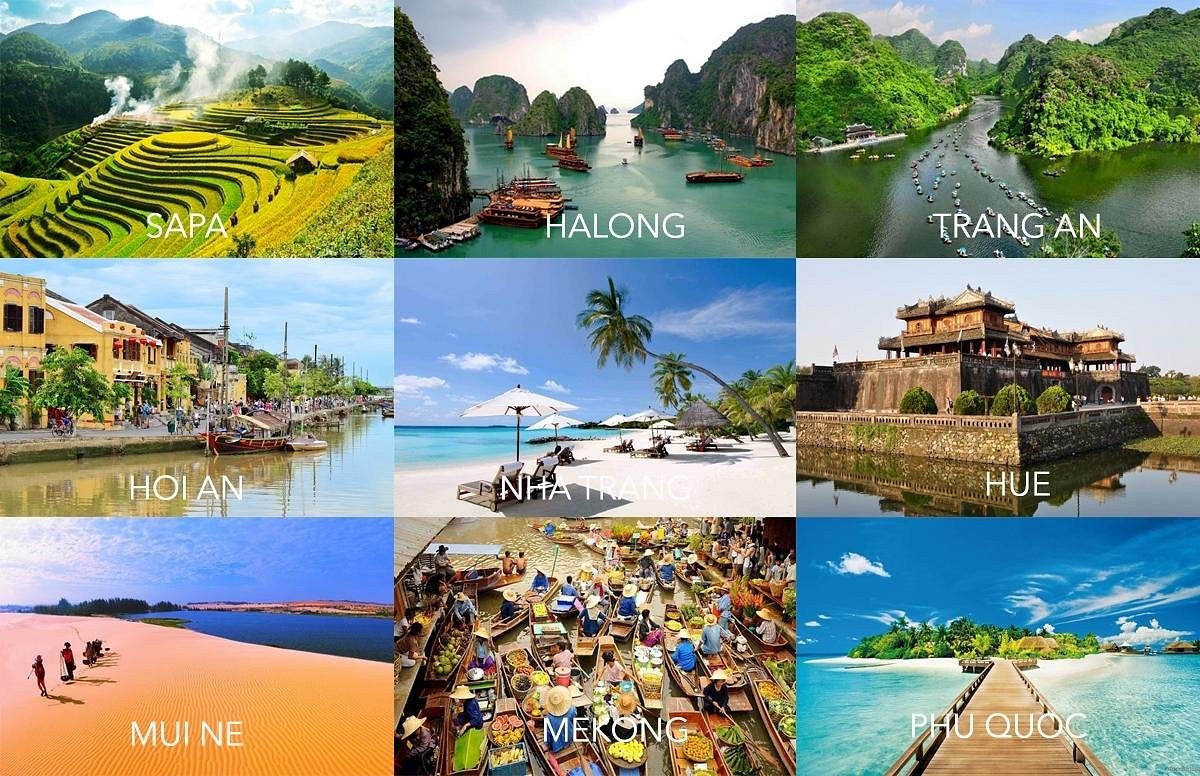
And If you’re searching for packages to suit your needs we have Standard package and Premium package for Vietnam.
When to Visit Vietnam
The Ultimate Seasonal Guide for Perfect Weather
Vietnam climate tells a tale of two halves, with the north and south often experiencing completely different weather patterns. This diversity makes timing crucial for your Vietnam adventure. Our Vietnam travel guide breaks it down by region to help you plan the perfect trip.

Northern Vietnam (Hanoi, Sapa, Ha Long Bay) experiences four distinct seasons. Winter (December-February) brings cool temperatures and occasional drizzle pack layers! Spring (March-April) offers mild temperatures and blooming landscapes, while summer (May-September) brings sweltering heat and heavy downpours that can transform Hanoi’s streets into temporary canals. Fall (September-November) is the golden season, with comfortable temperatures and clear skies perfect for photography.

Meanwhile, Southern Vietnam (Ho Chi Minh City, Mekong Delta) maintains its tropical personality year-round with just two seasons: wet and dry. The dry season (November-April) brings sunny days ideal for exploring without interruption. During the wet season (May-October), expect dramatic afternoon downpours that clear quickly, leaving behind glistening streets and refreshed air plus fewer tourists and lower prices.
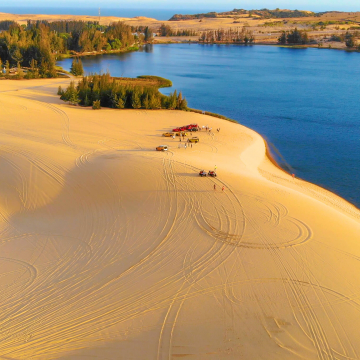
Central Vietnam (Hoi An, Hue, Da Nang) follows its own rhythms entirely. The best weather arrives between February and July, while October brings potential flooding that can temporarily submerge Hoi An’s ancient streets.

- Dry season (November-April): Perfect for beach destinations like Phu Quoc and Nha Trang with endless sunshine and calm seas
- Shoulder seasons (April-May, September-October): Fewer crowds with reasonable weather and significantly reduced hotel rates across the country
- Tet Holiday (Vietnamese New Year, usually late January-early February): Exciting cultural experiences with elaborate decorations and ceremonies, but expect business closures and domestic travel congestion
- Northern highlands: October-April offers clear skies for trekking among hill tribes, while summer brings lush, emerald-green rice terraces at their photogenic peak
According to our Vietnam travel guide research, the sweet spot for visiting most of the country falls between September and April, with February to April offering the most balanced conditions countrywide.

“Vietnam is a country of contrasts, where the weather can be as diverse as its landscape. Plan your visit around the seasons, and you’ll experience this beautiful country at its best. But remember some of my most memorable Vietnam moments happened during ‘bad’ weather, when sudden rains created misty, moody landscapes that felt magical.” – Lonely Planet Vietnam Travel Guide
If you are already intrigued by Vietnam’s offering Gomayu presents standard package and premium package for Vietnam.
Top 10 Must-Visit Destinations in Vietnam
From north to south, Vietnam unfolds like chapters in an epic novel, each destination revealing a different face of this multidimensional country. Any comprehensive Vietnam travel guide must showcase these iconic locations that capture the nation’s essence from frenetic urban energy to tranquil natural wonders that seem untouched by time.

Hanoi, Vietnam’s thousand-year-old capital, mesmerizes with its contradictions. In the Old Quarter, 36 ancient guild streets form a maze where centuries-old temples stand shoulder-to-shoulder with trendy cafes. Wake at dawn to join locals practicing tai chi around Hoan Kiem Lake, then spend your afternoon at the Temple of Literature, Vietnam’s first university, founded in 1070. As evening falls, pull up a tiny plastic stool at a sidewalk eatery and dine elbow-to-elbow with locals over steaming bowls of bun cha, the same dish Anthony Bourdain and Barack Obama famously shared in 2016.

Just a few hours east, Ha Long Bay emerges from the sea like a landscape from mythology. Over 1,600 limestone islands and islets create a seascape so breathtaking it’s inspired countless Vietnamese poems and paintings. The best Vietnam travel guide tip: opt for an overnight cruise to experience the bay at sunrise and sunset when most day-trippers have departed.
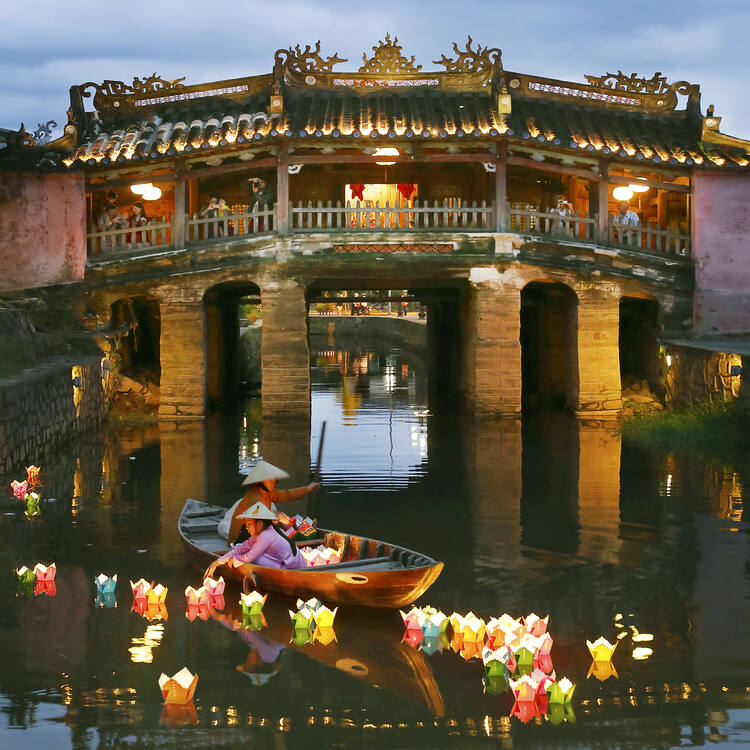
Central Vietnam holds some of the country’s most precious gems. In Hoi An, centuries of trade have created an architectural wonderland where Chinese temples, Japanese merchant houses, and French colonial buildings line streets illuminated by silk lanterns. Just 30 minutes away, Da Nang’s stunning coastline and the Instagram-famous Golden Bridge (held by giant stone hands) represent modern Vietnam’s creative ambitions.
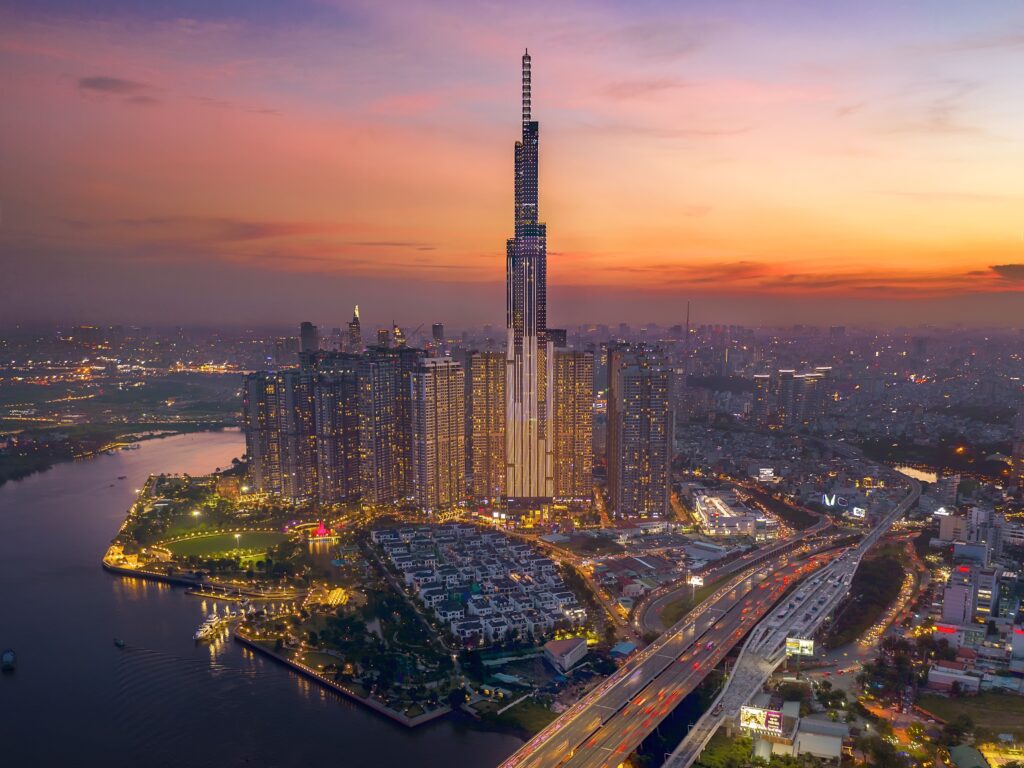
Further south, Ho Chi Minh City (formerly Saigon) pulses with unstoppable energy. Sleek skyscrapers tower over French colonial landmarks like Notre-Dame Cathedral and the Central Post Office, while the War Remnants Museum offers sobering reflections on Vietnam’s complex history. Beyond the tourist sites, the city’s entrepreneurial spirit shines through its cutting-edge art galleries, innovative restaurants, and bustling street markets.
- Hanoi: Experience the Old Quarter’s chaotic charm, sample egg coffee at Café Giang, and witness the somber Ho Chi Minh Mausoleum
- Ha Long Bay: Cruise among limestone karsts in this UNESCO site, explore hidden caves, and kayak through floating fishing villages
- Hoi An: Wander lantern-lit streets in this preserved ancient town, get custom clothing made by expert tailors, and cycle through surrounding rice fields
- Ho Chi Minh City: Dive into the energy of Vietnam’s largest metropolis, explore the Cu Chi Tunnels, and experience the city’s legendary street food scene
- Sapa: Trek among terraced rice fields and hill tribe villages, stay with local families, and shop for handmade textiles at the colorful market
- Hue: Explore the ancient Imperial City and royal tombs along the Perfume River, sample royal cuisine, and ride a dragon boat at sunset
- Mui Ne: Relax on beautiful beaches, sandboard down towering dunes, and photograph the enchanting Fairy Stream with its red canyon walls
- Da Nang: Enjoy modern beaches, visit the Marble Mountains with their hidden caves and pagodas, and take the perfect photo at Golden Bridge
- Mekong Delta: Witness floating markets at dawn, navigate narrow canals in a sampan boat, and taste tropical fruits fresh from riverside orchards
- Phu Quoc: Unwind on Vietnam’s largest island with pristine beaches, snorkel in crystal waters, and sample the island’s famous fish sauce
According to experienced travelers contributing to our Vietnam travel guide, two weeks allows you to sample the highlights, while a month enables a deeper exploration of these diverse destinations.

“Vietnam mesmerizes visitors with its spectacular landscapes, rich history, and extraordinary food. Each destination offers something unique to experience. What surprised me most wasn’t just the places themselves, but how differently you experience them at different times of day Hanoi at 5am is an entirely different city than Hanoi at 5pm, and both are magical in their own way.” – National Geographic Traveler
Vietnamese Dishes You Can’t Leave Without Trying
Food isn’t just sustenance in Vietnam, it’s an art form, a social connector, and a window into the country’s soul. Any Vietnam travel guide worth its fish sauce must dedicate special attention to the culinary adventures awaiting travelers. Vietnamese cuisine achieves an almost magical balance: complex yet accessible, bold yet delicate, and always emphasizing freshness above all else.
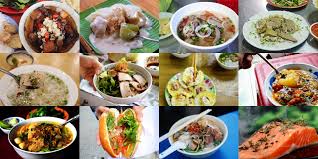
The country’s culinary geography tells the story of its history. Northern dishes reveal Chinese influences with their subtle seasonings and focus on freshwater fish and soy sauce. Central Vietnamese cuisine bears the imprint of ancient imperial courts with elaborate presentation and fiery spices. Southern cooking incorporates more tropical fruits, sugar, and herbs reflecting both the fertile Mekong Delta and historical connections to Cambodia and Thailand.

Start your delicious journey with Vietnam’s national dish: pho (pronounced “fuh”). This aromatic rice noodle soup varies dramatically between regions. Hanoi’s pho is relatively austere, with clear broth, thin slices of beef, and minimal garnishes. Southern-style pho arrives with a garden of fresh herbs, bean sprouts, and additional sauces to customize your bowl. In our Vietnam travel guide taste tests, we found morning pho, served by vendors who have often made just this one dish for generations, to be particularly transformative.

Street food forms the backbone of Vietnamese cuisine, with sidewalks transformed into dining rooms where tiny plastic stools and low tables host everyone from businesspeople to students. The banh mi sandwich perfectly symbolizes Vietnam’s cultural fusion a crusty French baguette filled with Vietnamese ingredients like cilantro, pickled vegetables, pate, and various proteins. At just $1-2, it’s perhaps the world’s most delicious culinary bargain.

For unique regional specialties, seek out bun cha in Hanoi (grilled pork served with rice noodles, herbs, and dipping sauce Obama’s meal of choice during his Vietnam visit), cao lau in Hoi An (chewy noodles with pork and greens, traditionally made with well water from specific ancient wells), and com tam in Ho Chi Minh City (broken rice with grilled pork, fish sauce, and fresh vegetables).

- Pho: The iconic Vietnamese noodle soup varies regionally try both northern (Hanoi) and southern (Ho Chi Minh City) versions to compare
- Banh Mi: French-influenced baguette sandwiches with Vietnamese fillings seek out shops with lines of locals for the best versions
- Bun Cha: Grilled pork with rice noodles, herbs, and dipping sauce especially transcendent at Hanoi’s Bun Cha Huong Lien (now called “Obama bun cha”)
- Egg coffee (ca phe trung): Hanoi’s specialty dessert-like beverage with whipped egg yolk and condensed milk visit Café Giang in the Old Quarter for the original
- Street food tours: The best way to experience authentic flavors with expert guidance our Vietnam travel guide recommends booking early in your trip to gain confidence about street food safety

Food markets offer another spectacular window into Vietnamese culinary culture. In Hoi An’s Central Market, vendors sell fresh herbs, spices, and noodles alongside street food stalls serving dishes made from ingredients found just steps away. For the ambitious, cooking classes allow you to bring Vietnamese techniques home many include market tours and become trip highlights.

Don’t forget to explore Vietnam’s distinctive beverage culture: strong, sweet Vietnamese coffee (ca phe sua da), fresh coconut water served in the shell, and bia hoi, ultra-fresh draft beer served on street corners for about 25 cents a glass.

“Vietnamese food is fresh, fragrant and ferociously delicious. To know Vietnam is to love its food, and once you’ve tasted it, you’ll understand why so many travelers return just for the cuisine. What makes Vietnamese food truly special is its accessibility from the humblest street cart to high-end restaurants, the commitment to fresh ingredients and perfect balance remains constant.” – CNN Travel
Transportation in Vietnam
Getting around Vietnam is half the adventure, and understanding your options transforms what could be logistical challenges into memorable experiences. Our Vietnam travel guide breaks down transportation methods that range from exhilarating to relaxing, helping you choose the right mode for each leg of your journey.
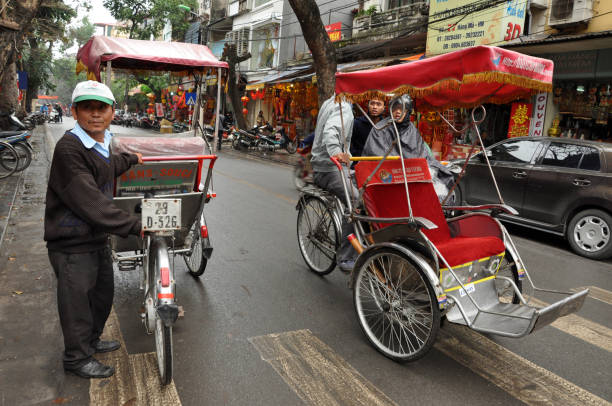
Vietnam’s elongated geography stretching over 1,000 miles from north to south makes transportation planning crucial. The good news? Vietnam offers remarkable infrastructure and diverse options at prices that will delight budget-conscious travelers.
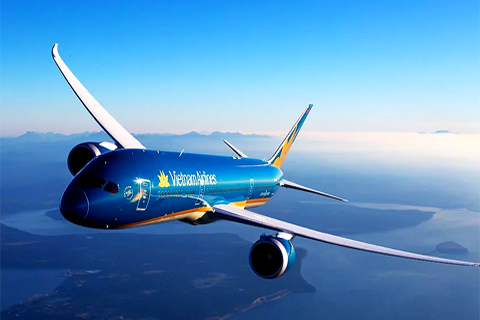
Domestic flights connect major cities through Vietnam Airlines, VietJet, and Bamboo Airways. For time-pressed travelers, this $30-100 investment saves precious vacation days. The Hanoi to Ho Chi Minh City route operates dozens of daily flights, turning a 36-hour journey into a two-hour hop. When booking through our Vietnam travel guide partners, we’ve found Tuesday and Wednesday flights typically offer the best value.
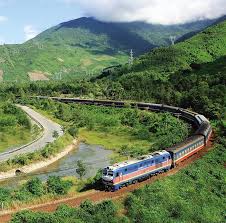
For travelers seeking both transportation and experience, Vietnam’s rail system delivers unforgettable journeys. The Reunification Express (Hanoi to Ho Chi Minh City) represents more than just transportation, it’s a 30-hour moving window into Vietnam’s changing landscapes and lifestyles. Splurge on a soft sleeper cabin (four bunks with clean linens) for about $60, and you’ll wake to misty mountains or coastal sunrises outside your window. The Lao Cai route connecting Hanoi to Sapa offers spectacular mountain views that rank among Asia’s most scenic rail journeys.
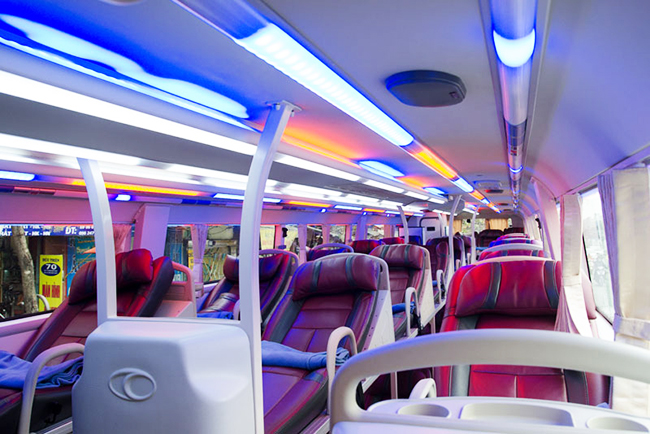
Buses range from basic to luxurious. For longer routes, Vietnam’s sleeper buses feature reclining bed-seats that accommodate even tall travelers reasonably well. While tickets cost just $10-20 for overnight journeys, expect occasional comfort compromises and drivers who interpret traffic laws creatively. The Open Tour bus system allows flexible hop-on/hop-off travel between major tourist destinations perfect for travelers with adaptable schedules.

For the intrepid, motorbiking represents Vietnam’s ultimate adventure. Whether you rent in each destination or buy a used bike for longer journeys (selling it before departure), two wheels unlock access to rural landscapes and mountain passes inaccessible to larger vehicles. The Ha Giang Loop in the far north offers the country’s most spectacular riding, while coastal Highway 1 provides easier navigation with ocean views. Our Vietnam travel guide safety note: Vietnamese traffic appears chaotic to newcomers, so start with quiet areas and always wear a helmet.

Within cities, downloading the Grab app (Southeast Asia’s equivalent to Uber) for car and motorbike taxis without haggling trips typically costs just $1-3. For an authentic experience, try a cyclo (three-wheeled bicycle taxi) in historic districts, but negotiate your price before departing.
- Domestic flights: Best for covering long distances quickly book Vietnam Airlines for reliability and VietJet/Bamboo for budget options
- Overnight trains: Comfortable alternative for north-south travel with breathtaking scenery and a chance to interact with Vietnamese families
- Motorbikes: The locals’ preferred method rent from reputable shops (approximately $5-10/day) and practice in quiet areas before braving city traffic
- Grab app: Southeast Asia’s Uber equivalent for easy city navigation without language barriers or haggling
- Buses: Budget-friendly for shorter intercity routes sleeper buses provide beds rather than seats for overnight journeys
For travelers with limited time, our Vietnam travel guide itinerary experts recommend strategic mixing of transportation modes: flights for longest distances, overnight trains for one scenic long-distance leg, and local transportation for immersive city experiences.
“The journey, not the destination, matters in Vietnam. Whether you’re zipping through Hanoi on the back of a motorbike or watching the countryside roll by from a train window, transportation becomes part of the adventure. My most vivid Vietnam memories aren’t of tourist attractions, but of conversations with fellow travelers on overnight trains and the feeling of freedom when motorbiking through mountain passes where road, sky, and rice terraces converge in perfect harmony.” – Rough Guides Vietnam
Vietnam on a Budget
Vietnam stands as a remarkable anomaly in today’s travel landscape, a destination where affordability doesn’t mean sacrifice. Our Vietnam travel guide consistently ranks it among Southeast Asia’s best value destinations, where even modest budgets stretch to accommodate experiences that would cost a fortune elsewhere.

Understanding Vietnam’s currency the dong (VND) is your first challenge. With approximately 25,000 dong to one US dollar, you’ll suddenly find yourself a millionaire (literally most ATMs dispense millions of dong at a time). The profusion of zeroes can be bewildering at first, but you’ll quickly develop a mental conversion system. Our Vietnam travel guide tip: download a currency converter app and calculate rough estimates by removing four zeros from dong prices (100,000 VND ≈ $4 USD).
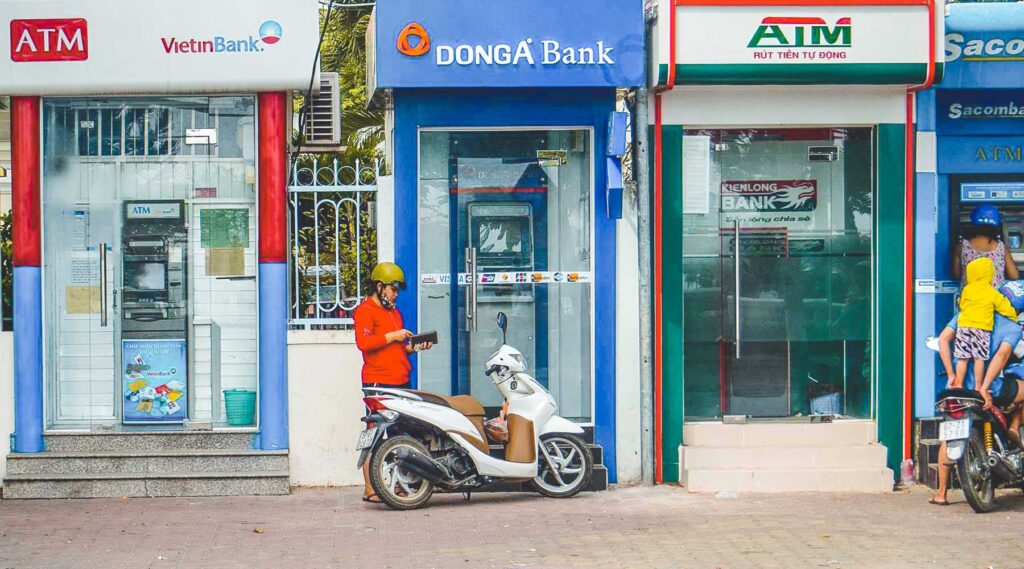
Accommodation in Vietnam delivers extraordinary value. Clean, comfortable guest houses with private bathrooms, air conditioning, and breakfast start around $10-15 per night. Mid-range hotels with sparkling facilities and central locations typically cost $30-50. Even luxury experiences remain accessible, five-star hotels in major cities often charge less than $100, while beachfront resorts with private pools might run $150-250 (compared to $500+ in Thailand or Bali).

Food represents Vietnam’s most remarkable bargain. Street food vendors serve sublime dishes for $1-2, making culinary exploration both delicious and economical. A hearty bowl of pho costs approximately 30,000-50,000 VND ($1.20-2.00), while a satisfying banh mi sandwich might set you back just 15,000-25,000 VND ($0.60-1.00). Even sit-down restaurants remain reasonably priced, a feast with multiple courses and drinks typically costs $5-10 per person. Our Vietnam travel guide recommends budgeting more for food than you think necessary, not because it’s expensive, but because you’ll want to try everything!
Transportation costs remain minimal. City bus rides cost about 5,000-10,000 VND ($0.20-0.40), while taxis through the Grab app typically run under $3 for most city trips. For overnight journeys, sleeper buses between major cities cost $10-15, while soft sleeper train berths run $40-60.
Activities and entrance fees vary widely but rarely break the bank. Major attractions like Ha Long Bay cruises represent your biggest expenses ($80-150 for overnight trips), while museum admissions typically cost just $1-3. Multi-day trekking tours in Sapa, including homestays with ethnic minority families, average $30-50 per day all-inclusive.

- Accommodation: Clean, comfortable rooms from $10-30 USD with breakfast included use Booking.com or Agoda for best rates and look beyond the first page of results
- Street food: Delicious meals for $1-3 USD follow locals and seek busy stalls with high turnover for best quality and food safety
- Local beer: Around $1 USD for a fresh draft (bia hoi) visit bia hoi corner in Hanoi for the ultimate budget drinking experience
- Bargaining: Expected at markets but not restaurants or hotels start at 50% of asking price and work toward 60-70% of the initial quote
- Free walking tours: Available in major cities through companies like Hanoi Free Tour Guides, where university students practice English while showing you hidden local spots
For significant savings, consider traveling during shoulder season (April-May, September-October), when hotel prices drop by 30-50% from peak rates. Another Vietnam travel guide insider tip: smaller cities like Ninh Binh, Dalat, and Hue offer similar experiences to their more famous counterparts at even lower prices.

“Vietnam delivers incredible value for money. You can travel well here on a modest budget while still enjoying experiences that would cost a fortune elsewhere. What makes Vietnam truly special is that budget travel doesn’t feel like a compromise, some of the country’s most authentic experiences, from street food to local transport, happen to be its most affordable. Even luxury travelers are surprised by how far their money stretches here compared to neighboring countries.” – Backpacker’s Guide to Southeast Asia
Local Customs Every Visitor Should Know
Respecting local customs enhances your experience and connections. The best Vietnam travel guide includes cultural insights to help you navigate social situations gracefully.
- Greetings: Slight bow or handshake (wait for locals to initiate)
- Temple visits: Dress modestly covering shoulders and knees
- Shoes off: Remove before entering homes and some businesses
- Gift-giving: Use both hands to show respect
- Photos: Always ask permission before photographing people
“The Vietnamese are incredibly warm and forgiving of cultural missteps, but making an effort to understand local customs shows respect and opens doors to authentic connections.” – Culture Trip Vietnam
Vietnam’s Locations Worth Exploring
While popular destinations deserve attention, a thorough Vietnam travel guide should highlight lesser-known treasures for travelers seeking unique experiences.
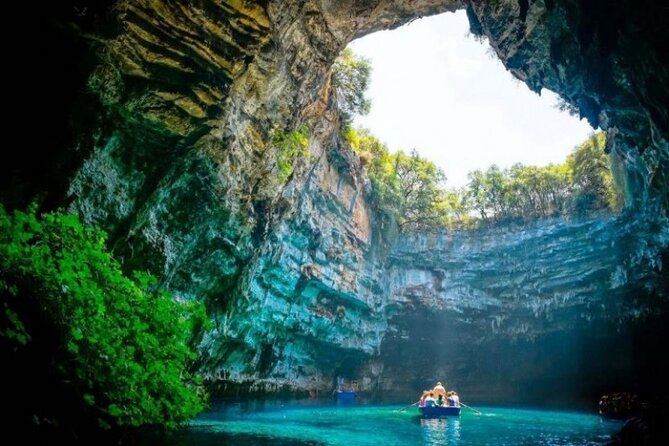
- Phong Nha-Ke Bang: Home to the world’s largest cave systems
- Ha Giang Loop: Vietnam’s most spectacular motorcycle route
- Con Dao Islands: Pristine beaches with fascinating prison history
- Dalat: French colonial hill station with temperate climate
- Ninh Binh: “Halong Bay on land” with fewer tourists

“The true magic of Vietnam lies in its hidden corners, where everyday life continues unchanged by tourism and landscapes remain pristine. These are the places that create lasting memories.” – Wanderlust Magazine
What to Bring for Every Region and Season
Preparation is key to comfort, which is why our Vietnam travel guide includes detailed packing advice tailored to different regions and activities.
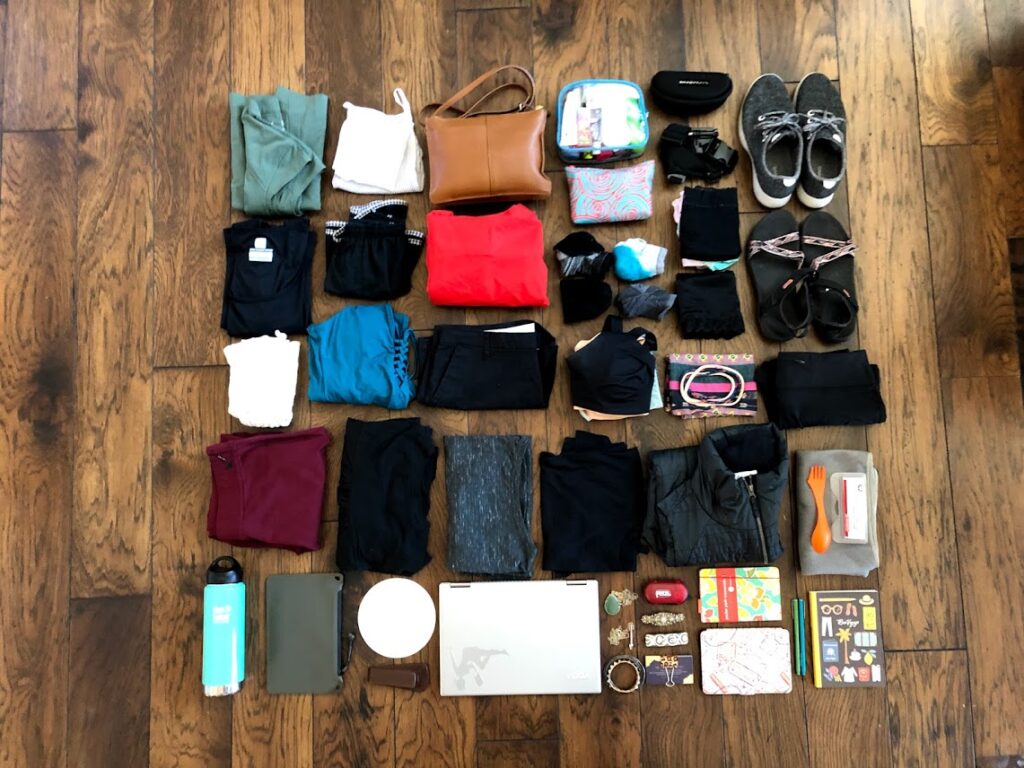
- Lightweight, breathable clothing: Essential for hot, humid conditions
- Rain jacket/poncho: Particularly during monsoon season (May-October)
- Good walking shoes: For city exploration and temple hopping
- Modest clothing: For temple visits (covering shoulders and knees)
- Bug spray: Mosquitoes are prevalent, especially in rural areas
“Pack light but smart for Vietnam. The country’s diverse climates and activities demand versatility, and you can always pick up inexpensive essentials locally if needed.” – Travel + Leisure
Vietnam Visa Guide
Understanding visa requirements is a crucial part of any Vietnam travel guide. Requirements vary based on nationality and planned length of stay.
- E-visa option: Available for many nationalities for stays up to 30 days
- Visa on arrival: Requires pre-approval letter before flying
- Multiple entry options: Consider if visiting neighboring countries
- Extensions: Possible in major cities but plan ahead
- Passport validity: Must be valid for 6 months beyond entry date
“Vietnam’s visa system has become increasingly traveler-friendly in recent years, but understanding the requirements beforehand saves headaches at the border.” – Vietnam Tourism Board
Adventure Activities in Vietnam
For thrill-seekers, a good Vietnam travel guide should highlight the country’s diverse adventure opportunities across various landscapes.
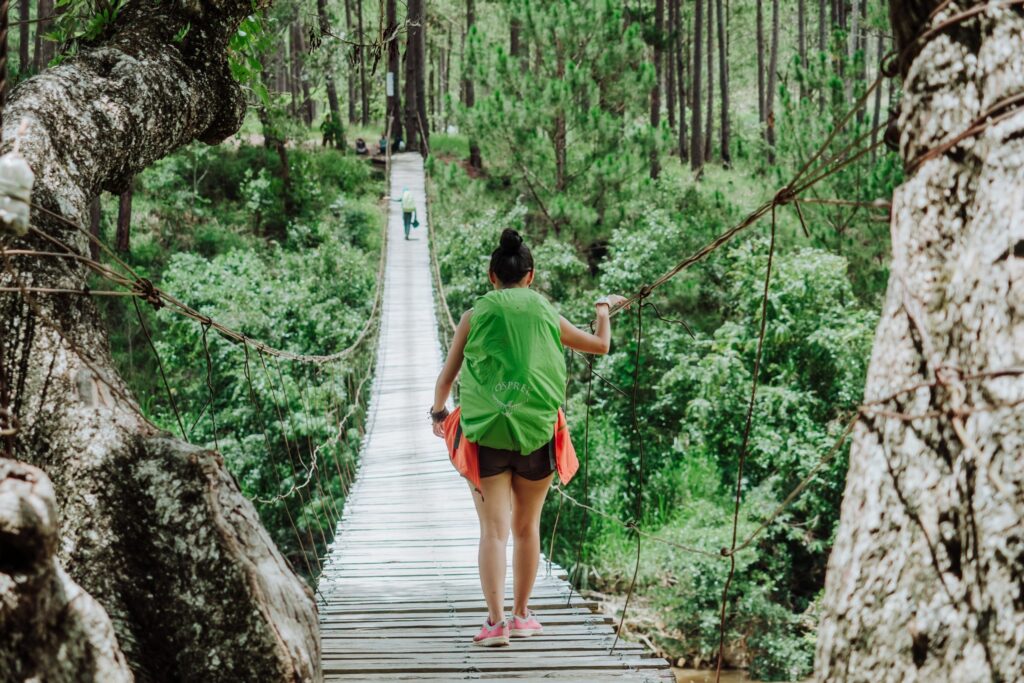
- Trekking: Multi-day homestay treks in Sapa and Ha Giang
- Caving: World-class experiences in Phong Nha-Ke Bang
- Motorbiking: The famous Ha Giang Loop or Ho Chi Minh Trail
- Water sports: Kitesurfing in Mui Ne or diving in Nha Trang
- Canyoning: Exciting descents near Dalat

“Vietnam offers adventure travelers an incredible playground, with experiences ranging from gentle to extreme across some of Asia’s most stunning landscapes.” – Adventure Travel Magazine
Your Journey Through Vietnam Begins
As our Vietnam travel guide demonstrates, this captivating country offers something for every type of traveler from budget backpackers to luxury seekers. The warmth of Vietnamese people, combined with breathtaking landscapes, rich history, and incredible food, creates an unforgettable travel experience that often leaves visitors planning their return before they’ve even departed.

Remember that flexibility and patience are your best companions while traveling through Vietnam. Embrace the occasional chaos, say yes to unexpected invitations, and allow yourself to be surprised by this remarkable country. Your Vietnam adventure awaits, pack your curiosity alongside your camera, and prepare for a journey that will touch all your senses and likely change how you see the world.
The most comprehensive Vietnam travel guide can only inspire the real discovery that happens when you step off the plane and immerse yourself in this fascinating country.








